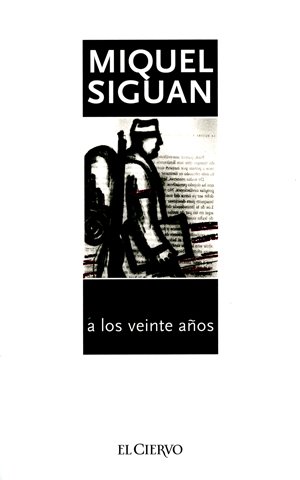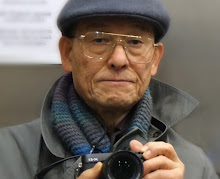スペインロマネスクの旅(18)(フノラールの聖マルティン教会 - Saint-Martin-de-Fenollar)
(For the summary in English please see the end of this page.)
このところスペインに出かける機会がなくなっているので、これから何回かにわけて、過去に訪ねたロマネスク教会のうち、とくに印象に残っているものをいくつか取り上げることにしたい。
(Address of the church) Saint-Martin-de-Fenollar, 66480 Maureillas-las-Illas, France
写真(1) 教会東面の図(East view)
フノラールの聖マルティン教会 (Saint-Martin-de-Fenollar)
ルション地方は17世紀まではカタルーニャ領であり、いまでもカタルーニャ語を話す人がけっこういる、などの歴史的背景から、スペイン(特にカタルーニャ)ではこの地域のロマネスクを「北カタルーニャ・ロマネスク」と呼んでいる。そんな背景もあるため、サン・マルタン教会を「スペインロマネスクの旅」のひとつに含める次第。
写真(2) Zodiaque社のRoussillon Roman
美術評論家の粟津則夫氏はこの教会を訪ねておられるが、「私を、いやおうなくスペインのロマネスク美術へ引きずりこんだのは、サンマルタン・ド・フラノールの教会の壁画に描かれたあの聖母の姿だ。」と断言するほど、強烈な印象を受けたらしい。(『スペイン巡礼の道』p.90-91新潮社(1985))
「あんたたちはバルセロナから来たのかね。お尋ねの教会は、あの畑の向こうに見える大通りを横切って、その先をすこし回り道をしながら行くんだが、道がいろいろ分かれていて分かりにくいから、もういちど誰かに道を訊くんだね。私がついて行ってあげたいんだが、ちょっと急いでいるので失礼する。」と言ってすたすた歩き去った。年齢からいって、スペイン内戦末期にカタルーニャからフランスに亡命した、家族の一員かも知れないな、という気がした*。
すこし回り道をしたが、なんとかサンマルタン・ド・フラノール教会を探し当てることができた。教会の建物は10m x 4mくらいで、礼拝堂なみのサイズ。
粟津氏の表現を借りれば「教会と言うより礼拝堂どころか、農家の倉かなんかと見誤られかねないようなごく貧弱な建物だったが、そのなかには、まったく思いもかけなかったほどの、おそるべきエネルギーがこめられていた。」(『スペイン巡礼の道』p.91)
写真(3) 教会全景(Saint-Martin-de-Fenollar, South View)
教会の入口は建物中央部の横にあり、短い石段を下りて教会内に入ると、右手の祭壇方向にあたる半円形の天井と、それを支える壁一面に、独特の色調と力強い筆で一気に描き上げた感じの壁画が、目を引く。
写真(4) 教会入口(Church entrance)
写真(5) 身廊部(祭壇方向の図)(Nave – view towards the altar)
壁画(Wall Painting)
たぶん、フランス革命のあと教会の建物が競売に付されたりした19世紀の話なのだろうが、この教会も農家の倉庫として使われていたことがあるらしい。それやこれやで、教会内部を飾っていた12世紀の壁画は、大きな損傷を受けてしまった。
写真(7) 降誕祭(Nativity)
写真(8) 降誕祭(Nativity)拡大図(Close up)
バルセロナのカタルーニャ美術館には、たくさんの壁画や木彫の聖母マリアが展示されているが、こんなけわしい表情のマリアは見当たらない。いや、これがキリスト生誕の場面で、横になっているのは聖母だと言われなければ、「いったいこの横臥した老人は誰だろう」などと思うのが、自然な反応かと思う。
写真(9) ヨハネの黙示録に登場する24人の長老たち(24 Elders)
写真(10) 教会内部(Church interior - West view)
写真(11) アプス(Apse - outside)
写真(12) 石の十字架(Stone carved Cross)
(補足) どこのロマネスク教会でも言えることだが、教会内は暗くて、8年前の私のカメラ(Fuji XE-1, Canon S100)では、画像ノイズ覚悟でISOをいっぱいにあげても、なかなか使い物になる写真が撮れなかったものである。
教会の撮影は三脚・フラッシュなしが条件なので、手振れや変色に苦労したが、いまは携帯電話をポケットに入れておけば、気軽に暗いところでも写真が撮れるようになった。カメラセンサーの進歩には感無量。
「もし、現在入手可能な高感度センサー内蔵カメラで、全てのロマネスク教会を撮りなおす事ができれば。。。。。」、まさに「夢は枯野をかけめぐる」心境である。
(Summary in English)
The Church of Saint-Martin-de Fenollar is a small, chapel like church in the Roussillon region of southern France. It is located about 15 km from the Spansh border, and it takes about 2 hours plus drive from Barcelona(180km)
The Roussillon region was part of Catalonia until the 17th century, and many people speak Catalan. In Spain(especially in Catalonia) this part is called ''Northern Catalonia''. Because of this background, I decided to include Saint Martin de Fenollar as part of my "Spanish Romanesque Journey".
St. Martin's Church is famous for its unique and powerful wall paintings from the 12th century, but other than records that suggest the church was founded in the 9th century, there are not many documents left and the details are unknown. The church was originally built in the Visigothic Pre-Romanesque style.
In the Roussillon region, where there are several small churches each with its own characteristics, Saint Martin church seems to be well known to Romanesque lovers. One of the books among ''la nuit des temps'' series (published by Zodiaque), famous guide books on Romanesque churches, ''Roussillon Roman'' devotes a chapter to the Saint Martin de Fenollar and uses its wall painting for the jacket as above Photo(2).
The entrance to the church is next to the center of the building, and as you walk down the short stone steps into the church, you will see the semicircular ceiling toward the altar on the right hand side which is painted in unique colors and with powerful brush strokes.
The 12th century wall paintings have been severely damaged especially when church building was once used as a farmer's storage after the French Revolution.
There are many murals and wood carvings of the Virgin Mary exhibited at the National Museum of Catalonian Art in Barcelona, but I have never seen one with such a stern expression. Unless you are told that this is the scene of the birth of Christ, your natural reaction would be to wonder, "Who in the world is this old person in the bed?
The Virgin is lying on a poorly made bed with a brown drape, her large eyes glittering with a stern expression, her left hand supporting her cheek. At her bedside, with his cheek resting on his hand, is probably Joseph, pondering something. In the upper right corner, you can see the little child Jesus with a serious expression on his face. This is the scene of a birth in a poor farmhouse. In the midst of such a life (working day in and day out and producing children in a life where there is nothing to please the eye or the mind), they seem to be looking at something beyond this world.














